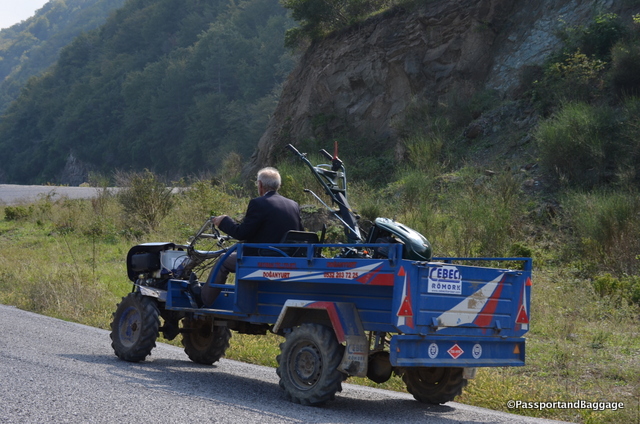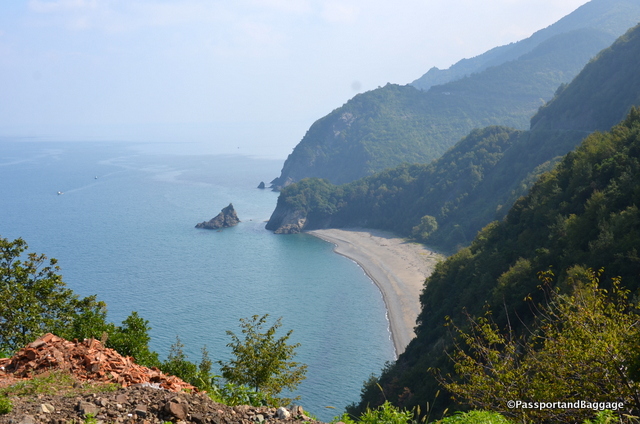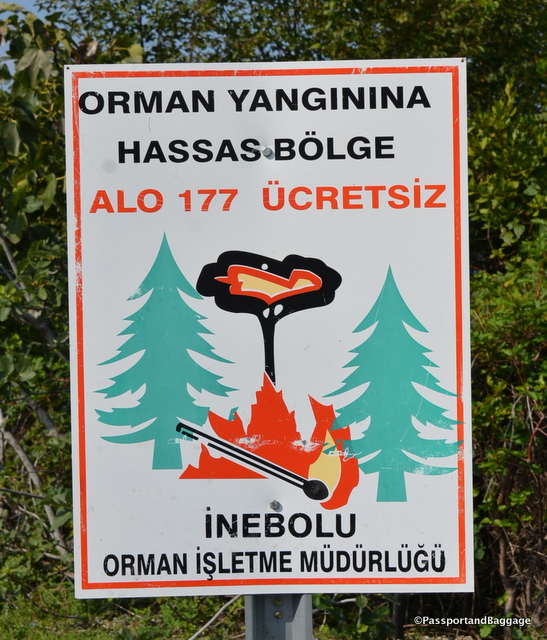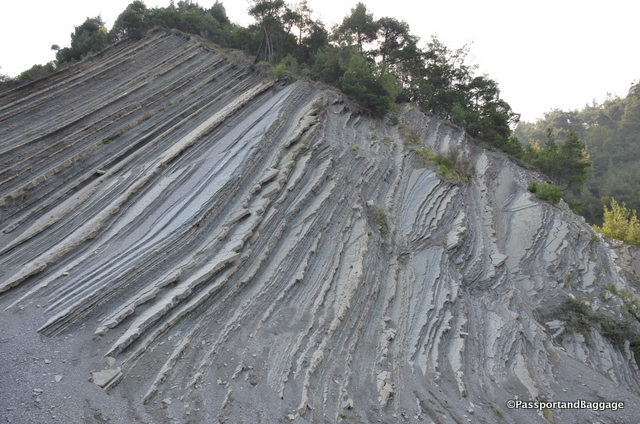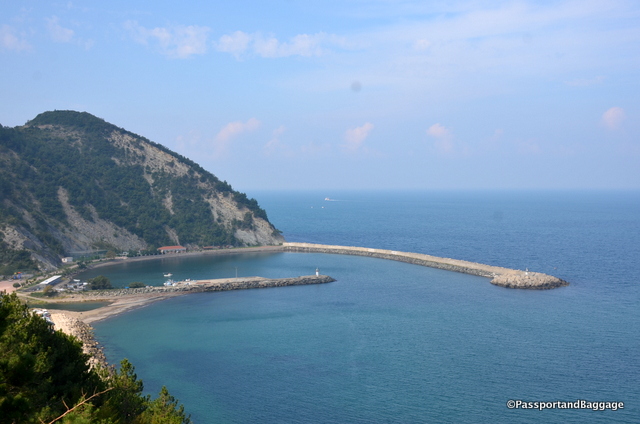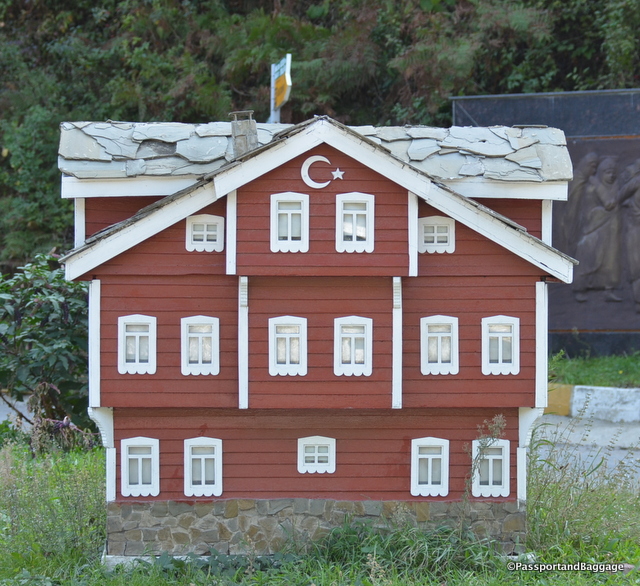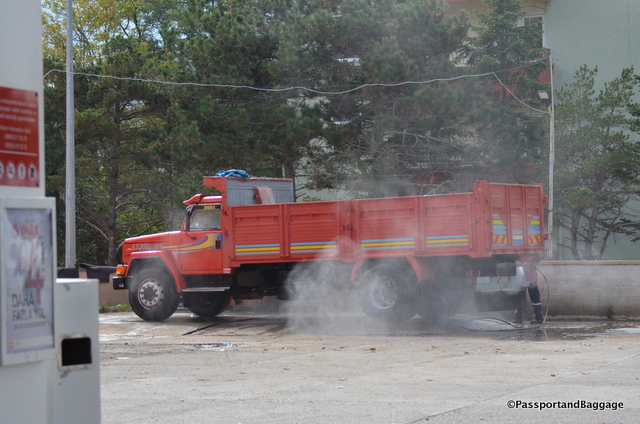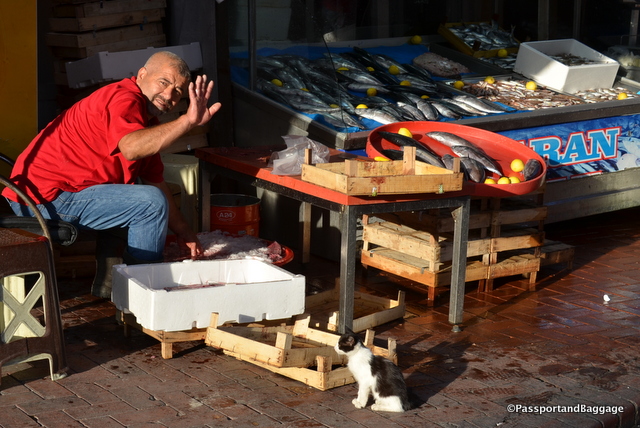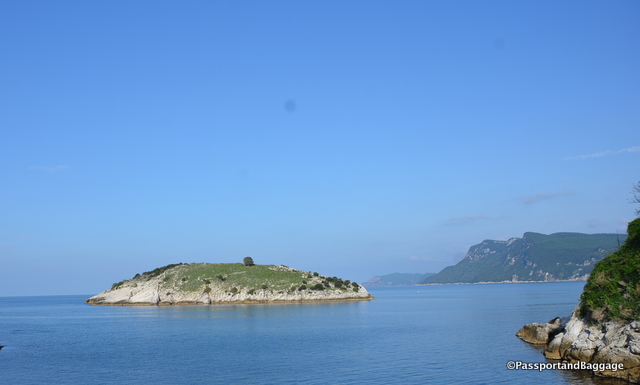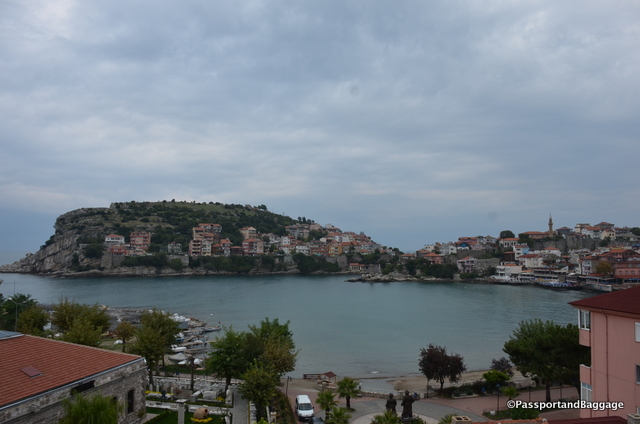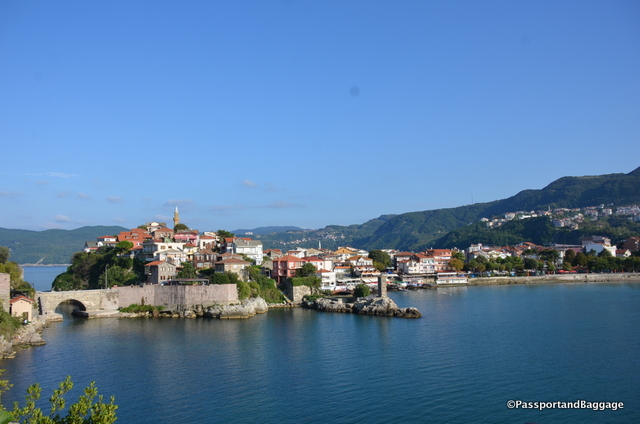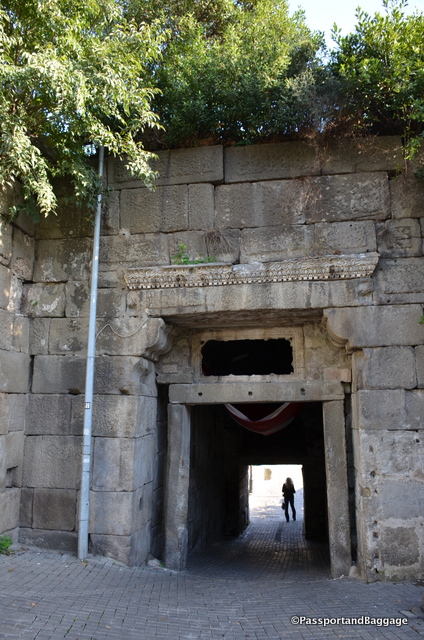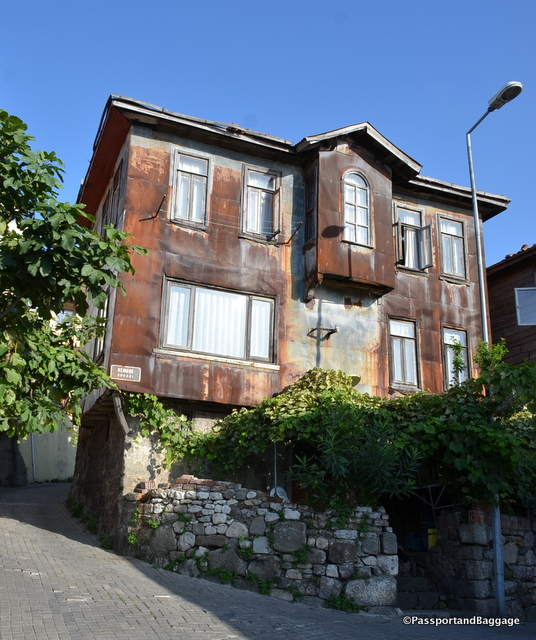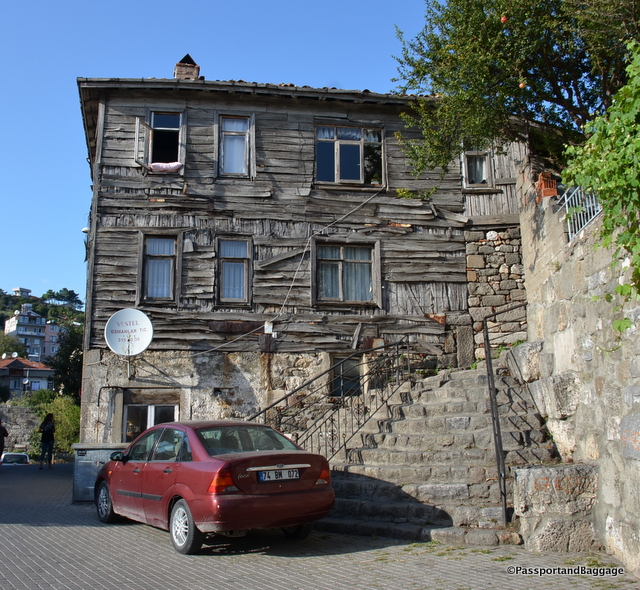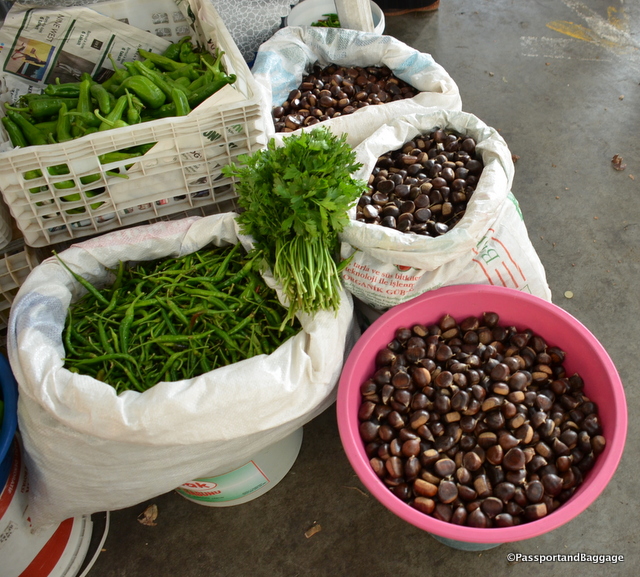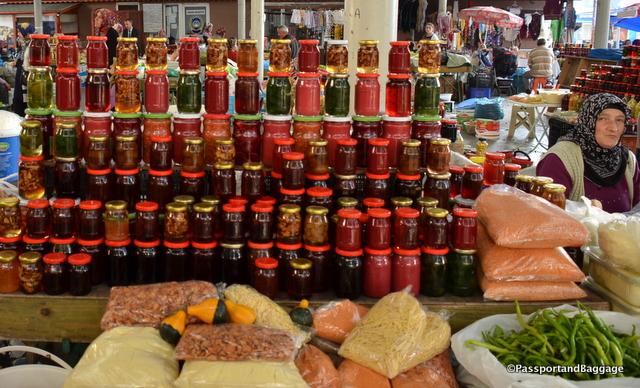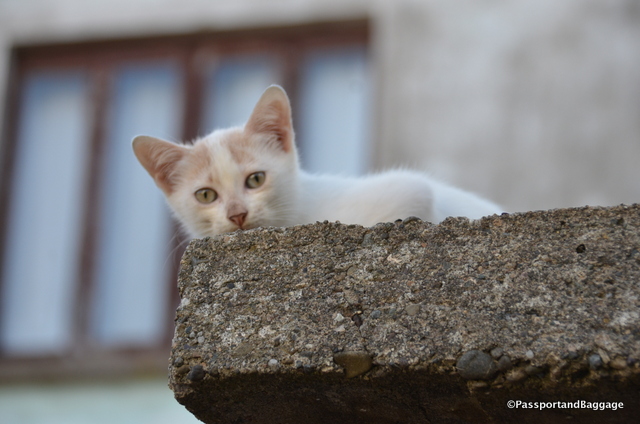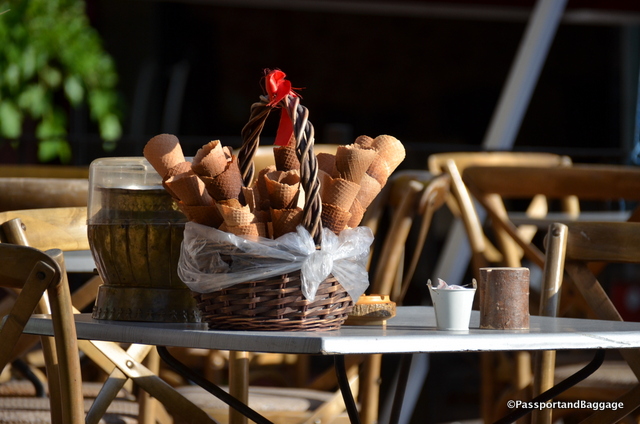October 4, 2016
Our day began this morning in the town of Abano. We had driven from Sinop the day before along the coast of the Black Sea. After overnighting in a “resort” hotel with only 6 other guests in this off-season we chose to take the coastal road all the way to Amasra.
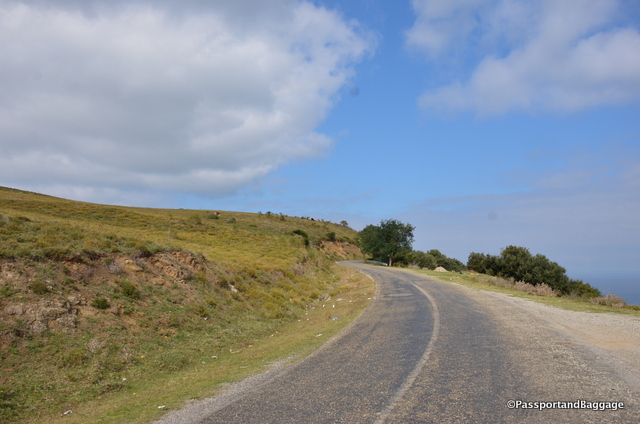 There is no way to explain this road. It is often only wide enough for two cars if they are both in their own lane and going slowly, it is often only wide enough for one.
There is no way to explain this road. It is often only wide enough for two cars if they are both in their own lane and going slowly, it is often only wide enough for one.
The topographical change within each mile is stunning. Seven of every eight turns is a blind curve and is either going at a 10 or 15% grade up or down.
There were many places where the road on the cliff side was undercut with erosion, making you hug the mountain as hard as your imagination would let you.
I would not have missed this drive for anything! I was the driver this day, I almost never got over 45KMH or 30 MPH, and I am an experienced driver with some race course time under my belt. The car is a manual, in other words, a stick-shift, my shoulder was exhausted after hour three, as I was shifting between 2nd and 3rd approximately every 1 minute.
The views were amazing, not just of the Black Sea coastline, but of the sheer cliff farm houses and orchards we saw along the way.
I did not take enough photos of this drive, as there just were no places to safely pull over. If you ever do the Black Sea, I highly recommend the drive, but allow much more time than the maps tell you, and I would recommend an automatic.
The Pontic Mountains spill into the Black Sea in this area, in some places making it too shear, to actually build roads or live along the coast. These mountains, like the Rockies were formed by plate collisions. In other words, where the tectonic plates slammed against each other creating this uplift of the earth. This made for some stunning views out our windows.
For much of this drive we were in the Kaçkar range, which is the highest point in the Pontic Mountains.
Very near the town of Doğunyurt is Cape Karambis. The promontory is the nearest point on the Anatolian coast to the Crimean Peninsula and has for centuries served as a nautical landmark for those seeking to cross the Black Sea at its narrowest point.
İNEBOLU
The town of İnebolu is known for its architecture. While we did drive through the town the houses that we had hoped to see are way up in the hills. When getting lost, I found this little model of the homes that the area is famous for. It probably shows them better than any real one would, as the area is densely forested, and homes are hard to see.
Architectural descriptions of the homes explain that the ground floor is built of stone and contains a cellar and pantry. Above it are one or two stories, each containing four bedrooms, one antechamber, a kitchen and toilet. Each of the floors is built so that it can easily be converted into one independent flat by closing a single door. This feature allows the married children of families to continue living in the same ancestral home they grew up in. Each floor also has its own separate street access.
The rooms have many windows and each room has a corbel and framework which enables the women to look out onto the street without being seen. The ceilings of the rooms are high and covered in carved art. Hand-rails in the houses are carved from a single piece of wood.
Most of the houses have roofs that are tiled with a special sea-stone called marla. The tiles are wide, thin and heavy, and protect the houses from the strong northeast winds that blow across the Black Sea. The stone also provides an excellent insulation against heat.
Each house has an orchard garden, we saw apples, pears, hazelnuts, chestnuts and walnuts. Apparently every garden has a well, which is used to refrigerate foodstuffs during the hot summer days.
The houses are painted with a special claret mineral pigment known as aşı boyası, which is highly resistant to sunlight and weathering.
AMASRA
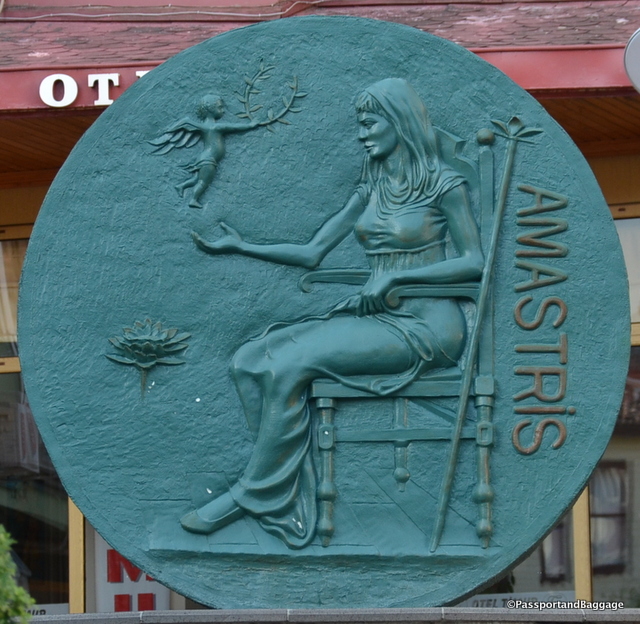
Amasra derived its name from Amastris, the niece of the last Persian king Darius III, who was the wife of Dionysius, tyrant of Heraclea
Our day finished in Amasra. It is a wonderful small town sitting on a small bay that just begs for a quiet cup of coffee and a long time to sit and enjoy.
Originally called Amastris by the Greeks, the town today is known for its beaches and natural setting, which has made tourism its biggest business.
*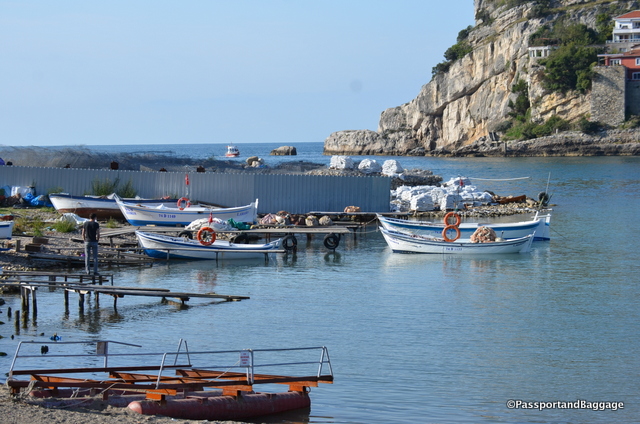 Amasra has two islands: the bigger one is called Büyük ada (‘Great Island’), the smaller one Tavşan adası (‘Rabbit Island’). You can walk across a very, very short bridge to Great Island and visit its small residential enclave. Rabbit Island is completely barren and is just a stones throw from the mainland and Great Island.
Amasra has two islands: the bigger one is called Büyük ada (‘Great Island’), the smaller one Tavşan adası (‘Rabbit Island’). You can walk across a very, very short bridge to Great Island and visit its small residential enclave. Rabbit Island is completely barren and is just a stones throw from the mainland and Great Island.
The towns history is deep, it was mentioned by Homer in one of his stories. Like most of Turkey it has seen multiple invasions, but it was mentioned by Pliney the Younger during Roman times. In 1261 the city became part of the Republic of Genoa.
Amasra Castle was built during the Roman period. The walls of the castle were built by the Byzantines. The front walls and gates were built by the Genoese in the 14th and 15th centuries. Though located on a narrow peninsula, a tunnel under the castle leads to a fresh water pool.
*
The evening ended with a stupendous fried anchovy dinner at Mustafa Amca’nın Yeri – Canlı Balık Restaurant.
